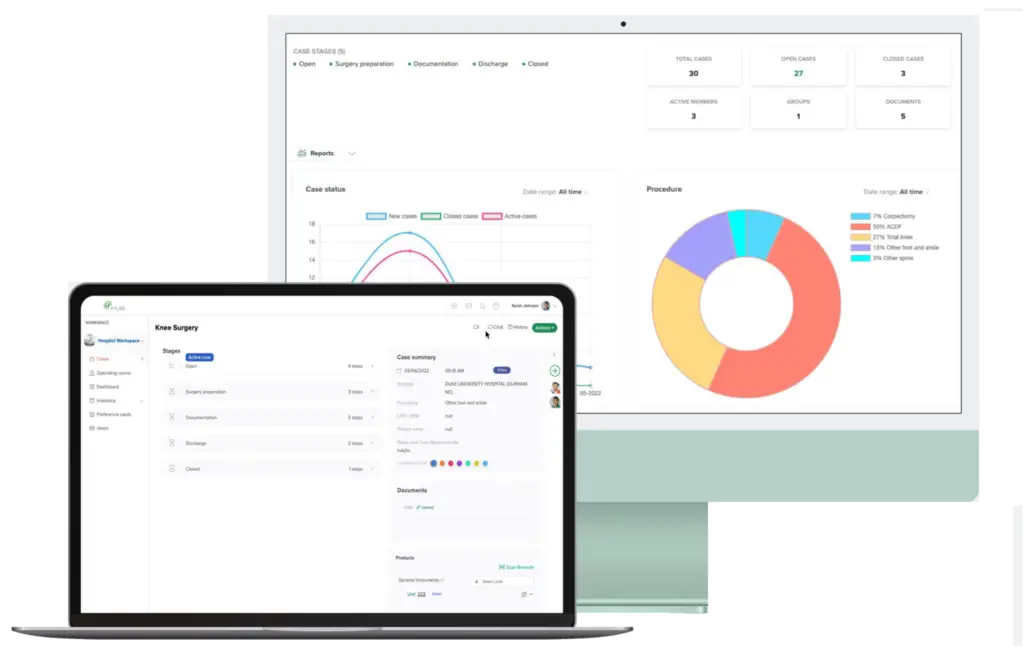Effective management of medical device inventory is essential for any healthcare facility. From hospitals to surgery centers, having the right software to track and maintain medical equipment can save time, reduce costs, and improve compliance. In this guide, we’ll walk you through how to choose the best medical device inventory management software, what features to look for, and how it can enhance your operations. Whether you’re aiming to streamline your inventory or ensure compliance with healthcare standards, this post will provide you with valuable insights to make an informed decision.
Why Medical Device Inventory Management Matters
Medical device inventory is a crucial component in the day-to-day functioning of healthcare facilities. Poor inventory management can lead to unnecessary costs, inefficiencies, and compliance issues. A well-organized system helps ensure that the right devices are available when needed, are well-maintained, and meet safety standards.
Benefits of Optimized Medical Device Inventory Management:
- Increased Efficiency: By automating processes, you reduce the time spent manually tracking and ordering equipment.
- Cost Savings: Proper inventory management reduces overstocking and prevents last-minute emergency orders.
- Regulatory Compliance: Accurate tracking and documentation ensure adherence to healthcare regulations, minimizing the risk of fines or operational shutdowns.
- Improved Patient Safety: Ensuring that all necessary devices are in stock and functioning properly reduces the chances of procedural delays or errors.
Choosing the best medical device inventory management software is key to unlocking these benefits.
Key Features to Look for in Medical Device Inventory Management Software
When choosing the best software for managing medical devices, it’s essential to understand what features will deliver the most value. Here’s a breakdown of some must-have features:
1. Automated Inventory Tracking
Manual tracking is time-consuming and prone to error. Look for software that automatically updates inventory levels as devices are used, ordered, or repaired. This will not only save time but also improve accuracy.
2. Maintenance Scheduling and Alerts
Maintenance and calibration of medical devices are critical for ensuring their performance and longevity. Your software should offer automated reminders for scheduled maintenance, including calibration and sterilization, to prevent costly equipment downtime and ensure compliance with safety regulations.
3. Compliance Tracking
Healthcare facilities must meet strict regulatory requirements, such as FDA guidelines. The best medical device inventory management software includes built-in compliance tracking, ensuring your facility can easily generate the necessary reports during audits or inspections.
4. Surgical Preference Profiles
For surgery centers, having customizable surgical preference profiles is a major time-saver. This feature allows you to predefine the equipment needed for specific surgeries, ensuring the correct instruments are ready when a procedure begins. It reduces room for error and eliminates the last-minute rush to gather supplies.
5. Vendor Management and Order Automation
The best software integrates with vendors to streamline the ordering process. Automated order generation based on pre-set thresholds ensures you never run out of essential devices or supplies. This integration also helps to maintain good relationships with vendors and minimizes delays.
6. Real-Time Analytics and Reporting
Understanding usage patterns, device lifecycles, and inventory costs can help you make informed decisions. Look for software with robust analytics and reporting capabilities to track equipment performance, costs, and inventory levels over time.
How to Choose the Right Medical Device Inventory Software
There are many options available for medical device inventory management, but not all are created equal. Here’s a step-by-step guide to help you choose the best software for your healthcare facility:
Step 1: Identify Your Facility’s Needs
Evaluate your current inventory management system. Are you struggling with manual tracking? Do you have frequent issues with equipment availability or maintenance? Identifying your pain points will help narrow down the software features that matter most.
Step 2: Evaluate Software Features
Look for software that offers the core features mentioned above—automated tracking, maintenance scheduling, and compliance tools. If your facility performs surgeries, prioritize options that provide surgical preference profiles and vendor management tools.
Step 3: Consider Scalability
As your facility grows, so will your inventory management needs. Choose a software solution that can scale with your organization. It should be able to handle an increasing number of devices and users without compromising performance.
Step 4: Look for User-Friendly Interfaces
Inventory management is used by multiple staff members, from inventory associates to surgery coordinators. Choose software with an intuitive interface that is easy to learn and navigate. Training time and user adoption are important factors for success.
Step 5: Ensure Compliance Support
Compliance is critical in healthcare, and your chosen software should include the ability to log device usage, maintenance, and repairs, ensuring you meet regulatory standards.
Popular Roles in Medical Device Inventory Management
With the complexity of healthcare operations, specialized roles like medical device inventory associates and surgery coordinators have emerged to focus exclusively on inventory management. These roles are essential for ensuring the right equipment is available when needed, especially in surgery centers where timing and precision are critical.
Medical Device Inventory Associate
A medical device inventory associate monitors and manages the stock of medical devices. They are responsible for tracking device usage, reordering supplies, and ensuring compliance with regulations. In many cases, they work closely with vendors to ensure timely deliveries and accurate order fulfillment.
Key Responsibilities:
- Managing inventory levels to avoid shortages or overstock.
- Scheduling and tracking maintenance of medical devices.
- Coordinating with vendors for timely delivery of medical supplies.
- Ensuring regulatory compliance and documentation.
Career Opportunities:
Positions like medical device inventory associate are becoming increasingly important as healthcare facilities focus on optimizing their supply chains. Companies such as Stryker frequently hire for roles in medical inventory management, offering opportunities for professionals in this field.
Real-World Applications in Surgery Centers
For surgery centers, managing medical inventory is particularly important due to the need for precise equipment availability for each procedure. The role of medical device inventory/surgery coordinators ensures that each operating room is fully equipped and that the necessary devices are maintained and ready for use. In these high-pressure environments, software that includes surgical preference profiles and automated reordering can make a significant difference in efficiency and patient outcomes.
Templates and Tools to Get Started
If you’re not ready to invest in software just yet, using medical equipment inventory templates is a great way to start organizing your devices. These templates can serve as a standardized method for tracking inventory and ensuring that everything is accounted for. Many healthcare facilities begin with simple templates before upgrading to more sophisticated software.
Conclusion: Finding the Best Software for Your Facility
Choosing the best medical device inventory management software can transform the way your healthcare facility operates. From automated tracking and maintenance scheduling to compliance support and vendor integration, the right software helps streamline processes, reduce costs, and improve patient safety. Be sure to evaluate your facility’s specific needs and choose a solution that is scalable, user-friendly, and compliant with healthcare regulations.
How HUB Healthcare Can Help
HUB Healthcare offers a comprehensive solution designed to enhance communication in healthcare, streamline care coordination, and improve overall workflow efficiency. Our platform includes features such as medical case management software, healthcare document management, and healthcare analytics to ensure that all aspects of patient care are optimized. By leveraging HUB Healthcare’s robust tools, organizations can reduce workflow bottlenecks, automate repetitive tasks, and facilitate better collaboration among healthcare providers. This not only improves work quality but also enhances patient outcomes, making HUB Healthcare an essential partner in achieving healthcare excellence.



